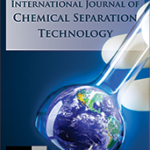Open Access

Vatsala Upadhyay,
- B.Tech. Student Department of Biotechnology, Meerut Institute of Engineering and Technology Uttar Pradesh India
Abstract
Areca palm plant is commonly known as Palm trees and belongs to the family Arecaceae. Probably one of the best and frequently grown plant families is the palm family. Palm trees are cultivating in South America, South Pacific area, Southern Asia, and Arabic countries etc. The greatest number of palm species may exist in Colombia. Palms are used to make a wide variety of everyday goods and cuisines. This palm plant provides a significant portion of the human food and many additional benefits for humans, both in terms of output and the number of domesticated species. This plant contains various phytochemicals especially secondary metabolites like tannins, phenolic acids, flavenoids, terpenoids, alkaloids, coumarins and saponins etc. These phytochemicals are played as medicinal properties and acts as anti oxidants to control disorders. This plant exhibits a wide range of pharmacological properties, including anti-tumor, anti-platelet, atheroprotective effects, neuroprotective actions and fibrinolytic effects etc. This study extracts the total phenolic content (TPC) and total flavonoid content (TFC) of palm leaves utilising ethanol and water as solvents. Ethanol solvent is shows best result for extraction of total phenolic content and it found to be 17 μg/ml. Water solvent is shows best result of total flavonoid content and it is found to be 12 μg/ml.
Keywords: Palm plant, phenolic content, flavonoid content, ethanol, water.
References
1. Elseify LA, Midani M, Shihata LA, El-Mously H. Review on cellulosic fibers extracted from date palms (Phoenix Dactylifera L.) and their applications. Cellulose. 2019;26(4):2209-32.
2. Alawar A, Hamed AM, Al-Kaabi K. Characterization of treated date palm tree fiber as composite reinforcement. Composites Part B: Engineering. 2009;40(7):601-6.
3. Hegazy S, Ahmed K, Hiziroglu S. Oriented strand board production from water-treated date palm fronds. BioResources. 2015;10(1):448-56.
4. Alotaibi MD, Alshammari BA, Saba N, et. Characterization of natural fiber obtained from different parts of date palm tree (Phoenix dactylifera L.). International journal of biological macromolecules. 2019; 135:69-76.
5. Akgül, M., Tozluoğlu, A. (2008). Utilizing peanut husk (Arachis hypogaea L.) in the manufacture of medium-density fiberboards. Bioresource Technology, 99(13), 5590-5594.
6. Ashori, A., Nourbakhsh, A., Karegarfard, A. Properties of medium density fiberboard based on bagasse fibers. Journal of Composite Materials.2009; 43(18), 1927-1934.
7. Sivarajasekar N, Prakashmaran J, Naushad M, et. Recent updates on heavy metal remediation using date stones (Phoenix dactylifera L.)–date fruit processing industry waste. InSustainable Agriculture Reviews. 2019; 34 (pp. 193-206). Springer, Cham.
8. Barreveld, W. H. Date palm products. FAO Agricultural Services Bulletin, No. 1993;101.
9. M. Bashah, Date variety in the Kingdom of Saudi Arabia. King Abdulaziz University Guidance booklet palms and dates, 1996; pp. 1225-1319. King Abdulaziz University Press, Riyadh, Saudi Arabia.
10. Muthusaravanan, S., Sivarajasekar, N., Vivek, et al. Research updates on heavy metal phytoremediation: enhancements, efficient post-harvesting strategies and economic opportunities. Green Materials for Wastewater Treatment, 2020; 191-222.
11. Demirbas, A. Utilization of date biomass waste and date seed as bio-fuels source. Energy Sources, Part A: Recovery, Utilization, and Environmental Effects, 2017. 39(8), 754-760.
12. Azodi, R. A., Hojjatoleslamy M., Shariati M. A. Comparison of chemical properties of kabkab and shahani palm kernel. African Journal of Science and Research. 2014; 3(6), 23-24.
13. Hussain A, Farooq A, Bassyouni MI, et al. Pyrolysis of Saudi Arabian date palm waste: A viable option for converting waste into wealth.
14. Nehdi, I., Omri, S., Khalil M. I., Al -Resayes, S. I. Characteristics and chemical composition of date palm (Phoenix canariensis) seeds and seed oil. Industrial Crops and Products.2010;32(3), 360-365.
15. Guido, F., Behija S. E., Manel, I., et al. Chemical and aroma volatile compositions of date palm (Phoenix dactylifera L.) fruits at three maturation stages. Food Chemistry, 2011; 127(4), 1744- 1754.
16. Chong K L, Kanniah K D, Pohl C, et al.A review of remote sensing applications for oil palm studies. Geo-spatial Information Science, 2017; 20(1), 184–200.
17. Khairunniza-Bejo S, Yusoff Y, Yusoff NS, Seman IA, Anuar MI. Identification of healthy and BSR-infected oil palm trees using color indices. International Journal of Agricultural and Biosystems Engineering. 2015;9(8):876-9.
18. Tugi A, Suri MA, Zainon O, et al. Oil palm tree growth monitoring for smallholders by using unmanned aerial vehicle. Jurnal Teknologi. 2015;77(26).
19. Allaith, A.A. Antioxidant activity of Bahreini date palm (Phoenix dactylifera L.) fruit of various cultivars. Int. J. Food Sci. Technol. 2008;43(6),1033–1040.
20. Al-Orf, S.M., M.H.M. Ahmed, N. Al-Atwai, et al. Review: Nutritional properties and benefits of the date fruits (Phoenix dactylifera L.). Bull. Natl. Nutr. Inst. Arab Republic Egypt 2012;39, 97– 129.
21. Al-Suwaiegh, S.B. Effect of feeding date pits on milk production, composition, and blood parameters of lactating Ardi goats. Asian Austral. J. Anim. Sci. 2016;29(4):509–515.
22. Assadi I., E. Walid, A.B. Mohamed, et al. Nutritional quality, and antioxidant capacity of a combination of pomegranate and date juices. 2018.

International Journal of Chemical Separation Technology
| Volume | |
| Received | June 29, 2022 |
| Accepted | June 30, 2022 |
| Published | January 7, 2023 |

